Hey, picking the right plants for your climate zone isn’t as tricky as it seems, but you’ve gotta start smart. First, check your USDA Hardiness Zone using your zip code online; it tells you which plants can handle your area’s coldest temps, like down to -10°F in Zone 5. Knowing this helps avoid winter die-offs. Curious how to match plants perfectly? Stick around for the next steps!
Contents
- 1 Climate Zone Map
- 2 Understanding Frost Dates
- 3 Selecting Native Plants
- 4 Considering Soil Conditions
- 5 Assessing Water Availability
- 6 Evaluating Sunlight Exposure
- 7 Matching Plant Hardiness Zones
- 8 Exploring Seasonal Temperature Variations
- 9 Researching Local Rainfall Patterns
- 10 Checking Microclimate Variations
Climate Zone Map

Hey, let’s explore understanding the Climate Zone Map, a key tool for picking the right plants. You’ve gotta know your zone to avoid gardening flops. This map, often based on average annual minimum temperatures, splits regions into numbered zones, like 5 or 9. It’s your guide to what thrives where.
Start by finding your zone on a map, usually available online or at local nurseries. Check the USDA Hardiness Zone Map if you’re in the U.S.; it’s super detailed, down to half-zones like 7a or 7b. Match plants to your zone’s range, ensuring they can handle the typical lows.
Don’t guess—double-check your location. A quick search with your zip code nails it. Now, you’re set to shop smart!
Understanding Frost Dates
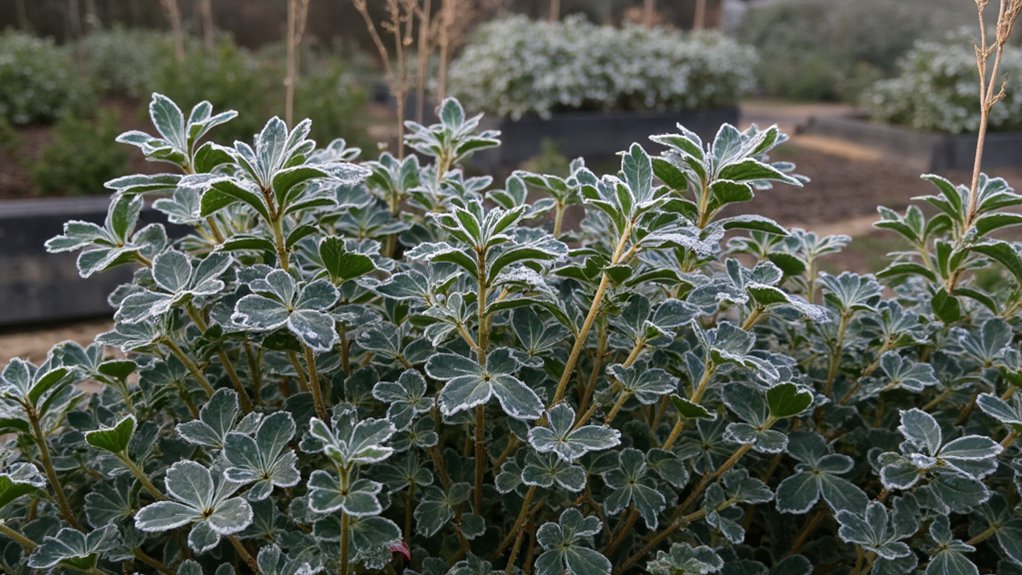
Now that you’ve got your climate zone figured out, let’s tackle frost dates, another key piece for planting success. These dates mark the average first and last frost of the year in your area. Knowing them helps you avoid planting too early or too late.
Start by checking your local frost dates online, often listed by zip code on gardening websites. Look for the “last spring frost,” typically between March and May, and the “first fall frost,” usually from September to November, depending on your region. Use these as a guide to plan your planting schedule.
Don’t guess—be precise! Mark these dates on your calendar, and adjust by a week or two for safety, since weather can be tricky.
Selecting Native Plants
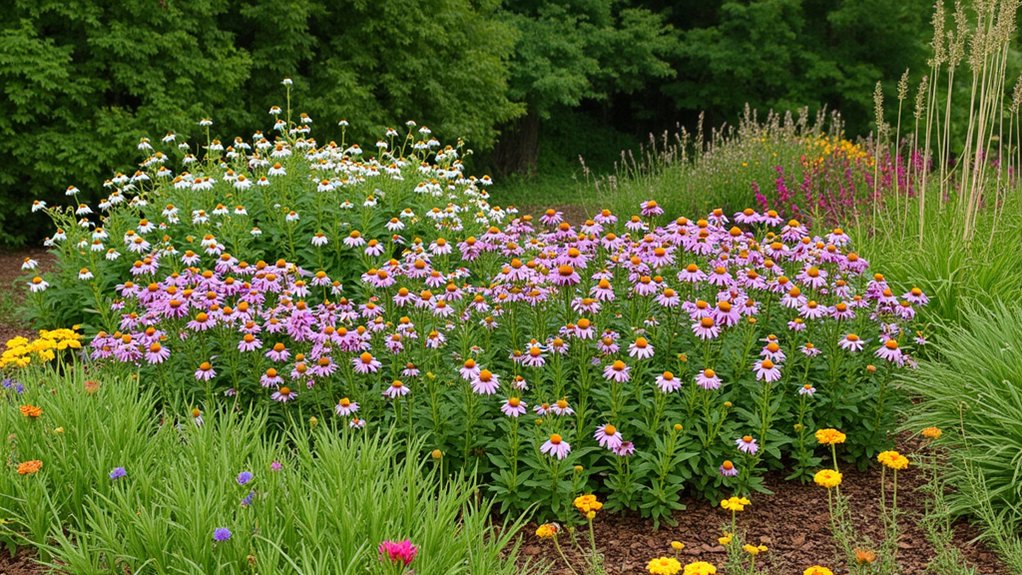
While frost dates set your planting timeline, selecting native plants can make your garden thrive with less effort. You’ve gotta pick plants that naturally grow in your area, as they’re already adapted to your climate. This means less watering, fewer pests, and minimal fuss for you.
Start by researching native species at a local nursery or online database. Look for plants suited to your specific region, not just your state, since conditions can vary widely within 50 miles. Check bloom times and growth habits to plan a year-round display.
Once you’ve got your list, buy from trusted sources to guarantee authenticity. Plant them during the right season, following spacing guidelines—usually 12-18 inches apart—to avoid overcrowding. You’re setting up a low-maintenance, thriving garden!
Considering Soil Conditions
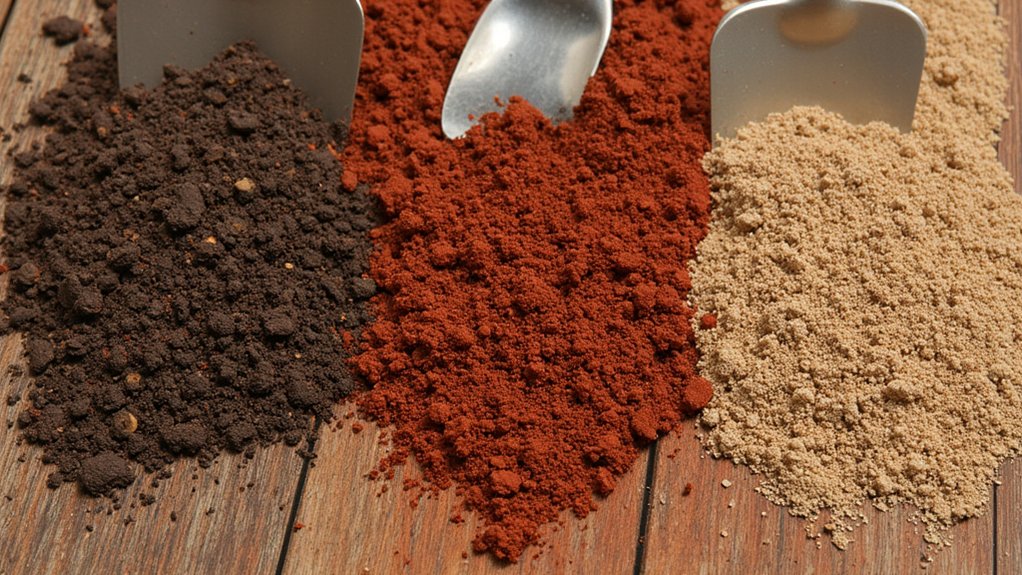
Let’s shift focus to your soil conditions, a key factor in making those native plants flourish. You’ve gotta know what’s beneath your feet before planting. Soil type—whether it’s sandy, clay, or loamy—affects how roots grow and nutrients spread.
Start by grabbing a handful of dirt from about 6 inches deep, then squeeze it. Does it crumble easily, or stick like glue? Sandy soil, which drains fast, often needs organic matter like compost, about 2-3 inches mixed in. Clay soil, heavy and dense, might require aeration—try tilling it with sand or gypsum, roughly 1 pound per square foot. Test pH too; aim for 6.0-7.0 for most plants. Adjust with lime or sulfur if needed, following package directions. Get digging!
Assessing Water Availability
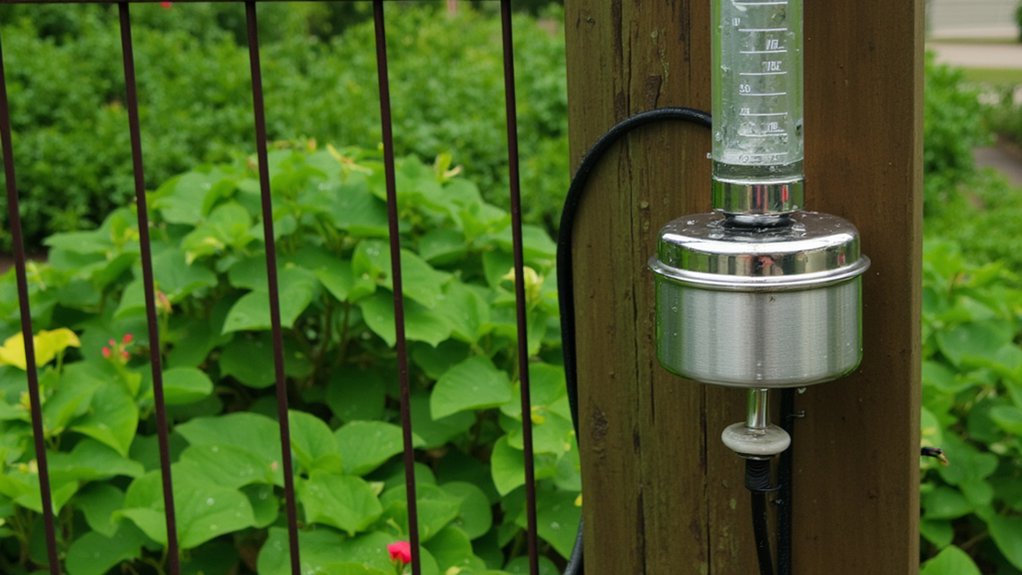
Digging into water availability, you’ve gotta figure out how much moisture your plants can count on. Start by checking your area’s average rainfall—look up data online for inches per month. Some zones get 40 inches yearly, others barely 10, so know your numbers.
Next, assess your irrigation options if rain isn’t enough. Can you set up a drip system, delivering 1-2 gallons per plant weekly? Test your soil’s drainage too; dig a 12-inch hole, fill it with water, and time how long it takes to drain—over 24 hours means poor drainage. Adjust your plant choices accordingly.
Finally, track seasonal patterns. Does rain come mostly in winter, leaving summer dry? Plan for extra watering during those parched months, keeping plants thriving.
Evaluating Sunlight Exposure
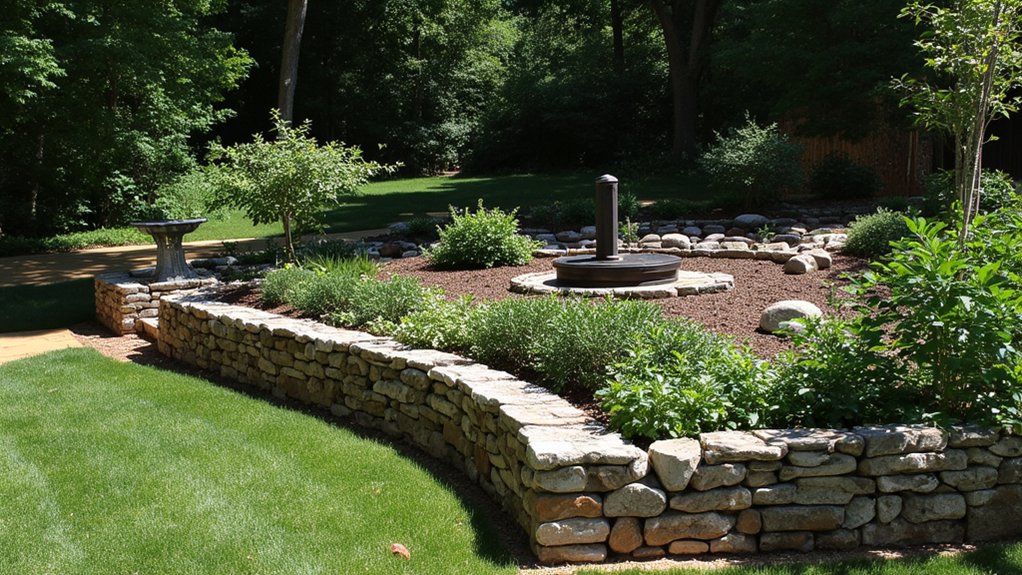
How do you figure out the sunlight your plants will get? First, grab a notebook and check your garden spot. Observe it over a full day, noting when direct sun hits. Does it get 6 hours or just 2?
Next, mark areas as full sun, partial shade, or full shade. Full sun means 6+ hours of direct light daily; partial shade is 3-6 hours, often with dappled light. Full shade gets less than 3 hours, usually under trees. Track this for a week to confirm patterns.
Lastly, use this data to pick plants. Some need blazing sun, others thrive in shade. Match their needs to your yard’s reality, and you’ll avoid sad, wilting disasters. It’s straightforward, right? Just watch and plan!
Matching Plant Hardiness Zones
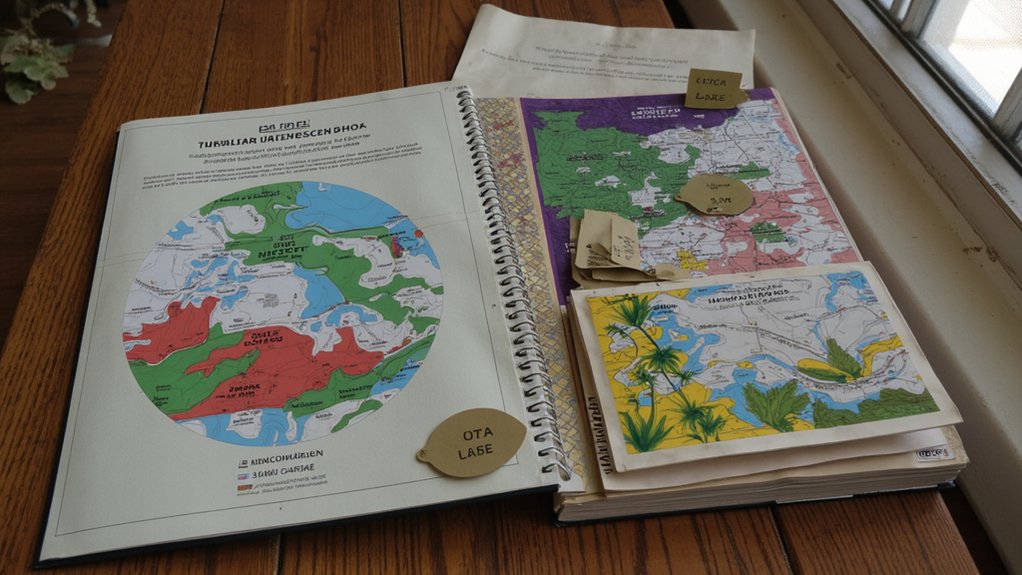
Three key steps can guide you in matching plants to your hardiness zone, ensuring they survive and thrive. First, find your zone using the USDA Hardiness Zone Map online. It’s easy—just enter your zip code, and you’ll get a number, like 5b or 9a, showing your area’s cold tolerance.
Next, check plant labels or catalogs for their zone range. If a plant says zones 4-8, and you’re in zone 6, you’re good to go. Make sure it fits, or it won’t make it through the winter.
Finally, stick to local nurseries for advice. They know what grows best in your zone, often recommending plants rated for zones slightly lower, like 5 for zone 6, to be safe. Trust their expertise, and you’ll avoid costly mistakes.
Exploring Seasonal Temperature Variations
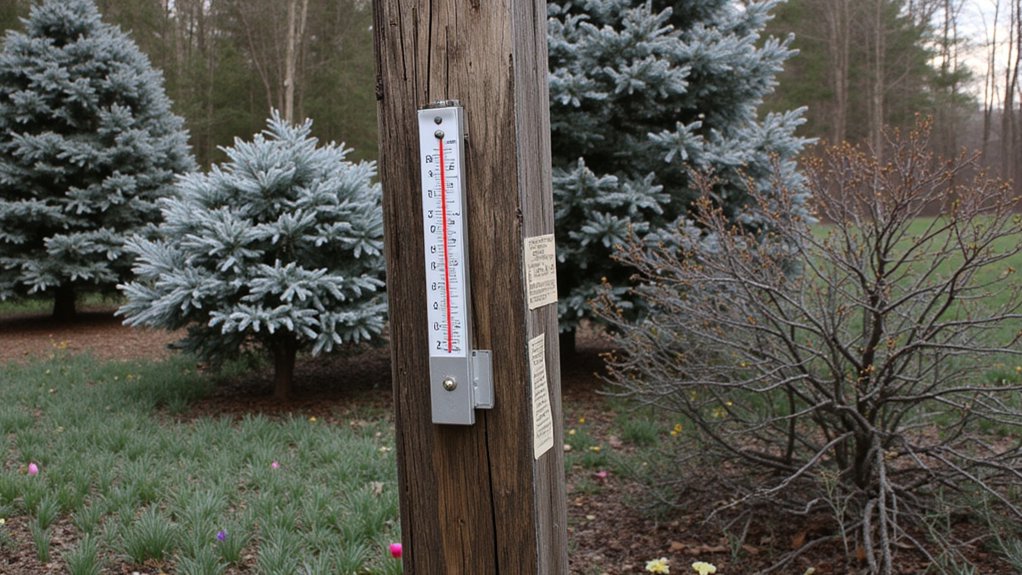
While picking plants for your hardiness zone is essential, understanding seasonal temperature swings in your area adds another layer of smarts to your gardening game. Don’t just look at yearly averages; dig into monthly highs and lows. Check your local weather data for patterns, like a sneaky late frost in April or a scorching July peak at 95°F.
Track these shifts over a few years if you can, using a simple notebook or app. Notice when temps drop below 32°F or spike above 85°F, as these extremes affect plant survival. Compare this to your plants’ needs—some can’t handle sudden 20°F drops. With this info, you’ll pick varieties that thrive through your area’s wild temperature rollercoaster.
Researching Local Rainfall Patterns
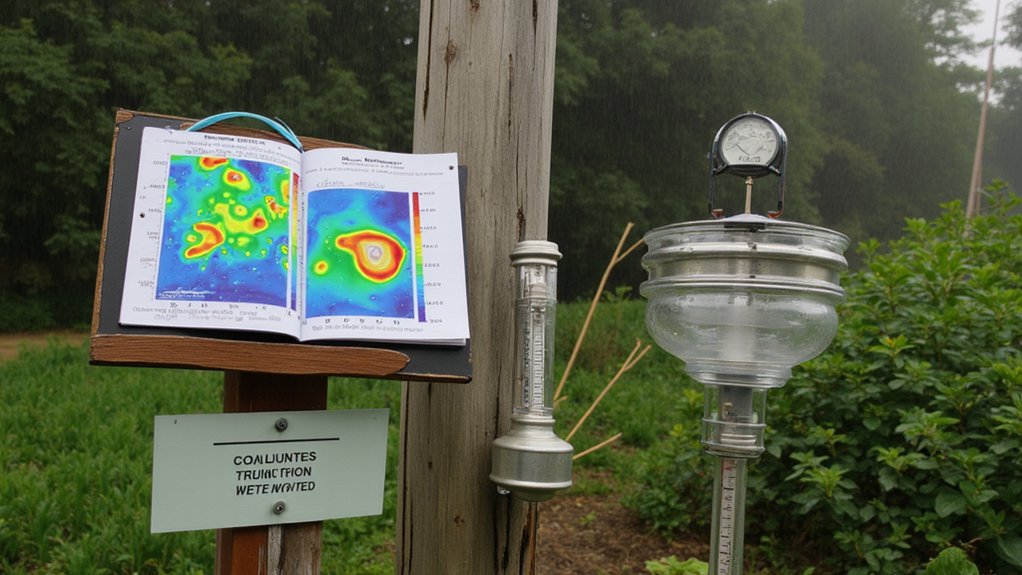
After nailing down temperature swings, let’s plunge into researching local rainfall patterns for your garden’s success. You’ve gotta know how much water nature provides before picking plants. Start by checking historical rainfall data for your area, often available on weather websites or local agricultural extensions.
Look for average monthly precipitation, ideally over the past 10-30 years, to spot trends. For instance, does your region get 3 inches in June but only 0.5 in August? Note these differences, as they’ll guide your plant choices. Next, dig into seasonal patterns—some areas get heavy spring rains, others a dry summer.
Use this info to match plants to your rainfall reality. Check records now, and you’ll avoid waterlogged or thirsty gardens later.
Checking Microclimate Variations
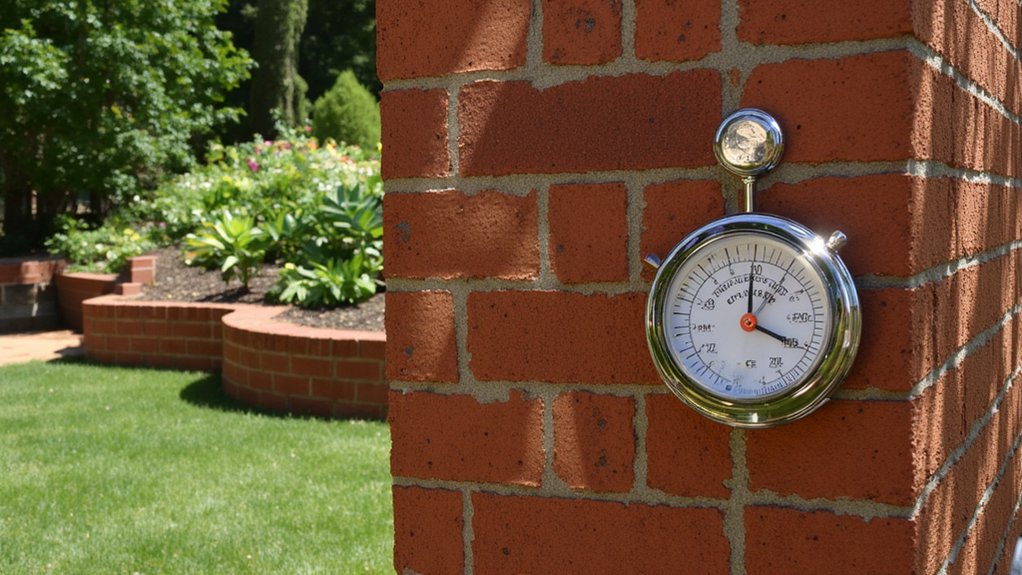
Several factors can tweak the growing conditions right in your own backyard, and that’s where microclimates come into play. You’ve gotta check these small-scale variations, since they can shift temperature or moisture just a few feet apart. Think about slopes, walls, or even large trees creating shade or windbreaks.
Start by walking your property, noting sunny spots versus shady corners. Measure temperature differences with a simple thermometer, checking morning and afternoon readings over a week. A south-facing wall, for instance, might be 5-10 degrees warmer, perfect for heat-loving plants.
Next, observe water drainage after rain—does it pool in low areas? That’s a microclimate clue. Adjust your plant choices, ensuring they match these unique, hyper-local conditions.
